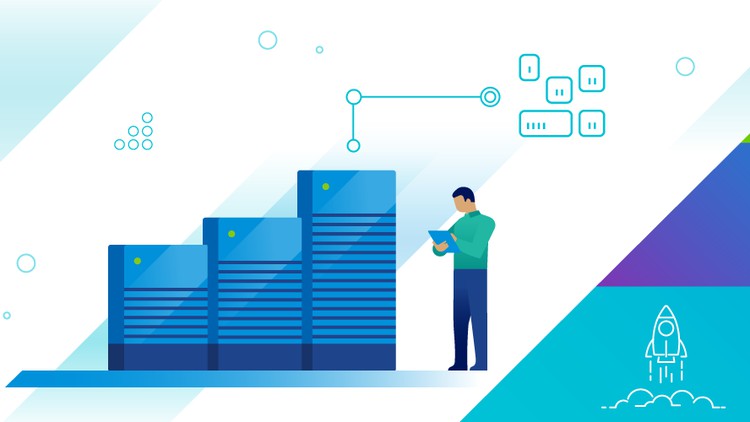VMware vSAN: Deploy and Manage V7
Deploying & Managing a software-defined storage Solution | vSAN Node Management, Cluster Maintenance & Monitoring
What you’ll learn
VMware vSAN: Deploy and Manage V7
-
VMware vSAN concepts 7 Design
-
Deploy VMware vSAN LAB on VMware Workstation
-
Deploy & Manage VMware vSAN 7
-
Configure, Monitor, Optimize, and Design VMware vSAN 7 deployments
-
Create shared storage for vSphere Clusters using the local capacity of ESXi hosts
Requirements
-
Basic of Virtualization & VMware vSphere
Description
*** if you have any questions or need help you can contact me over my LinkedIn ***
VMware vSAN (formerly Virtual SAN) is a hyper-converged, software-defined storage (SDS) product developed by VMware that pools together direct-attached storage devices across a VMware vSphere cluster to create a distributed, shared data store. The user defines the storage requirements, such as performance and availability, for virtual machines (VMs) on a VMware vSAN cluster and vSAN ensures that these policies are administered and maintained.
vSAN is part of the VMware ESXi kernel and runs on industry-standard x86 servers from original equipment manufacturers (OEMs), including Cisco, Dell EMC, Hewlett Packard Enterprise, Fujitsu, Lenovo and Supermicro. Because vSAN is a native component, it does not require additional software, and the user can enable it with a few clicks.
The distributed architecture of VMware vSAN enables the parameters of the storage policy to be enforced despite changes in virtual machine (VM) workload demands or hardware or network failures. The vSphere Web Client handles cluster administration and storage policy implementation.
vSAN supports both hybrid and all-flash configurations using a two-tier architecture. Both configurations use a caching tier and a capacity tier.
Important features
VMware vSAN includes a number of key features, although the feature set varies depending on the license type. Some of vSAN’s key features are Storage Policy-Based Management, stretched clusters, checksum and software-defined data-at-rest encryption which does not require self-encrypting drive (SEDs).
vSAN 6.6 claims to deliver 50% more IOPS than previous versions of vSAN because of the way it minimizes storage latency through the use of server-side flash devices. It also includes a new health check feature that enables the administrator to see at a glance whether or not the vSAN cluster is healthy and, if it detects a problem, help diagnose the issue.
A vSAN cluster can include between 2 and 64 nodes. The vSAN 6.6 Enterprise license offers stretched clusters with local site protection, and native data-at-rest encryption designed to achieve higher availability and security with minimal CPU overhead. Both Advanced and Enterprise licenses support deduplication, compression and erasure coding data services for all-flash configurations. Erasure coding can be configured with either single or double parity protection against disk failures.
All the vSAN licenses also offer support for storage quality of service (QoS), which enables an administrator to place limits on the number of IOPS that specific VMs can consume.
Who this course is for:
- Storage Admin
- Virtualization Admin
- Network Admin
- Security Engineer
- Last updated 9/2021
VMware vSAN: Deploy and Manage V7
Clear and Simple VMware vSphere 7 Professional
Download Now Content From: https://www.udemy.com/course/vmware-vsan-deploy-and-manage-v7/









